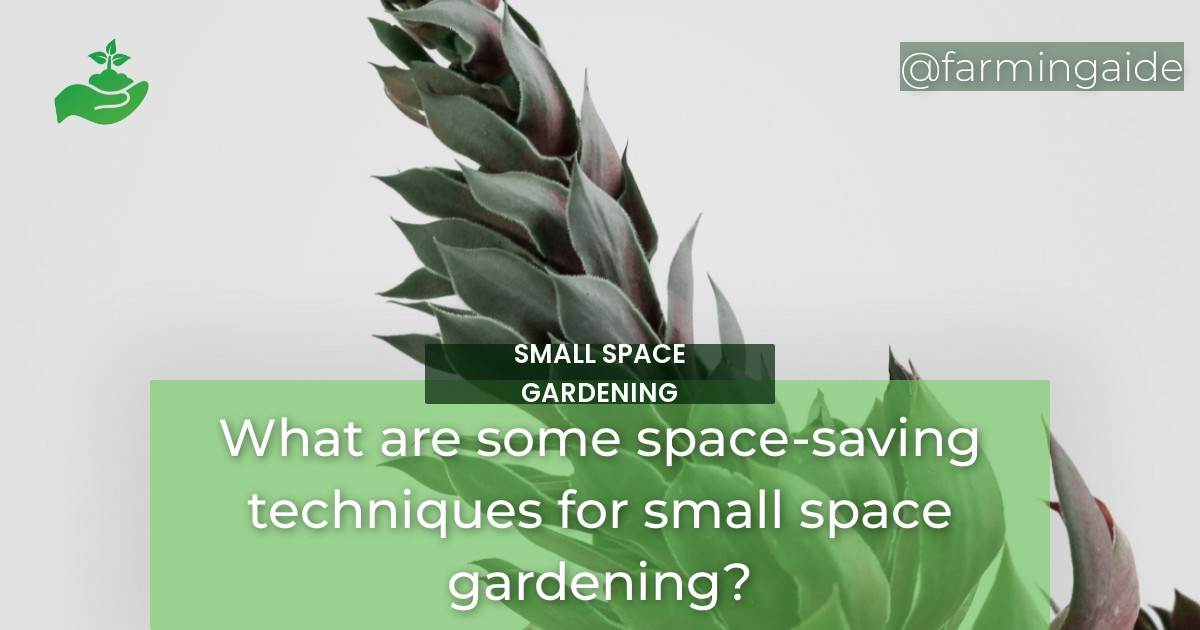Small space gardening doesn’t have to be a challenge. With a little creativity and effort, you can maximize your space and create a beautiful garden that thrives. In this article, we will explore various space-saving techniques for small space gardening. From container gardening to creative garden layouts, we will cover everything you need to know to make the most of your limited gardening space.
Tips and Tricks for Maximizing Space in Limited Space Gardens
Container Gardening
Container gardening is one of the most effective ways to utilize small gardening spaces. By planting in containers, you can grow your favorite plants without worrying about limited space. Here are some tips for successful container gardening:
Choosing Containers
- Choose containers that are the appropriate size for your plants.
- Make sure your containers have drainage holes to prevent overwatering.
- Consider using recycled containers like old buckets or cans.
Growing in Vertical Space
- Use trellises and stakes to support vining plants.
- Hang containers from walls or railings to free up floor space.
- Plant in tiered containers to maximize vertical space.
Companion Planting in Containers
- Pair plants that have similar growing requirements in the same container.
- Plant herbs with vegetables to repel pests.
- Consider planting flowers with vegetables to attract beneficial insects.
Intensive Gardening
Intensive gardening involves planting in small spaces using techniques like raised beds and succession planting. Here are some tips for intensive gardening:
Planning Your Garden Space
- Draw a garden plan to determine the best use of your space.
- Consider using companion planting to maximize space.
- Use crop rotation to prevent soil-borne diseases.
Using Raised Beds
- Build raised beds to create more planting space.
- Use a square-foot gardening method to plant densely.
- Fill raised beds with high-quality soil to promote plant growth.
Succession Planting
- Plant crops that have short harvest times to maximize yield.
- Start new plants as soon as you harvest the old ones.
- Plant cool-season crops after warm-season crops to extend your growing season.
Miniature and Dwarf Plants
Miniature and dwarf plants are ideal for small space gardening. Here are some tips for growing miniature and dwarf plants:
Choosing the Right Plants
- Look for plants that are labeled as miniature or dwarf varieties.
- Choose plants that have a compact growth habit.
- Select plants that are suitable for your growing conditions.
Caring for Miniature and Dwarf Plants
- Water miniature and dwarf plants frequently to prevent stress.
- Use a high-quality potting mix to promote healthy growth.
- Fertilize regularly with a balanced fertilizer.
Using Miniature and Dwarf Plants in Your Garden
- Use miniature plants as borders or fillers.
- Plant dwarf trees as focal points in your garden.
- Grow miniature vegetables for a fun and unique addition to your garden.
Creative Garden Layouts
Creative garden layouts can help you make the most of your small space. Here are some ideas:
Circular Gardens
- Plant in a circular pattern to create a visually appealing garden bed.
- Use a variety of plants with different heights and textures.
- Consider adding a water feature or focal point in the center of the garden.
Keyhole Gardens
- Build a circular raised bed with a notch in the center for easy access.
- Place a compost bin in the center of the garden for easy composting.
- Plant vegetables and herbs around the edge of the garden for easy harvesting.
Square Foot Gardening
- Divide your gardening space into one-square-foot grids.
- Plant each square foot with a different plant or group of plants.
- Use a trellis to grow vining plants vertically.
Making the Most of Your Space
There are many ways to make the most of your small gardening space. Here are some ideas:
Utilizing Wall Space
- Hang planters on walls or fences to create a living wall.
- Install shelves to hold small planters or potted herbs.
- Use a trellis or climbing plants to cover a blank wall.
Incorporating Hanging Baskets
- Hang baskets from a porch or balcony to add color and texture to your space.
- Plant herbs or trailing plants in hanging baskets to save space.
- Choose baskets that are lightweight and easy to move.
Adding Garden Decor and Accessories
- Use garden decor like statues or fountains to add interest to your small space.
- Choose accessories like colorful pots or garden gnomes to add personality to your garden.
- Use solar-powered lights or lanterns to create ambiance in your space.
Other Space-Saving Techniques
Here are some additional space-saving techniques for small space gardening:
Interplanting
- Plant fast-growing crops with slow-growing ones to maximize space.
- Interplant herbs with vegetables to repel pests and attract beneficial insects.
- Use companion planting to maximize space and improve plant health.
Growing Up Instead of Out
- Use trellises or stakes to support vining plants like tomatoes or cucumbers.
- Grow vegetables like lettuce or kale in hanging baskets or vertical planters.
- Consider using a hydroponic system to grow plants without soil.
Growing in Unconventional Spaces
- Grow plants in small spaces like window boxes or planters on a balcony.
- Plant a vegetable garden in a small space like a shipping pallet or gutters.
- Use a community garden or urban farm to grow plants if you don’t have space at home.
With these space-saving ideas for small areas, urban gardening space utilization, small space gardening hacks, and techniques for space-saving gardening, you can still have a beautiful and productive garden no matter how limited your space may be.


